Floating aquarium plants: varieties, selection and care features
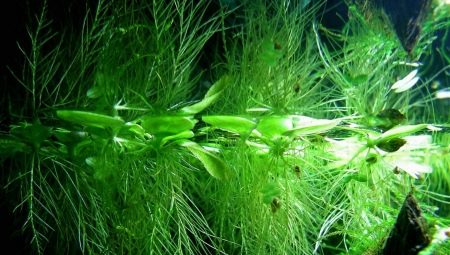
Buying an aquarium is a great way to refresh your home, making it livelier, fresher and more interesting. When designing a living corner, it is important not only to select its inhabitants and create comfortable conditions for them - flora is of great importance. In the article we will talk about floating aquarium plants.
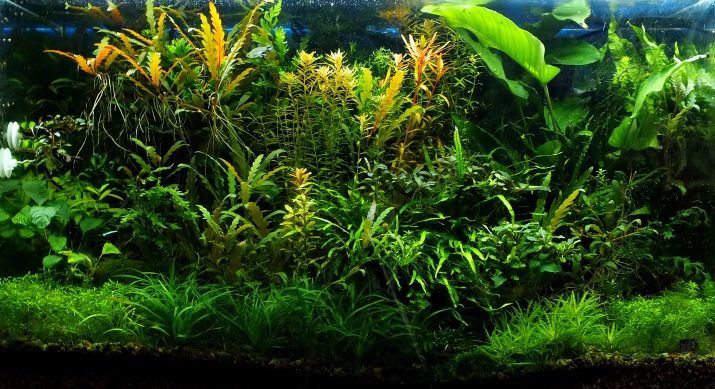
Introduction
After installing the aquarium, filling it in and choosing the inhabitants, you need to think about what plants will decorate the underwater world. Flora serves both decorative and practical purposes. For some species of fish and shellfish, this is another source of food, fresh and natural.
Some species grow in the ground, others float on the surface of the water, enchanting with their beauty and expressiveness.
There are many types of floating plants that are great for decorating your home aquarium.
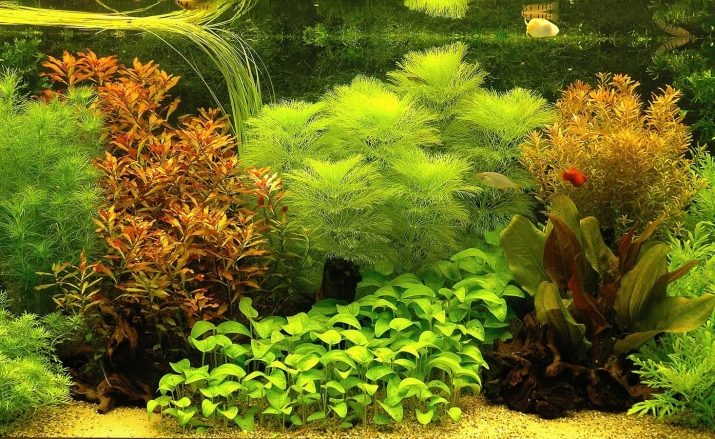
Horsefowl species
There are many varieties of plants that thrive on the surface of the water, decorating both compact and spacious aquariums of different shapes. Next, let's take a closer look at the most common varieties with names and descriptions.
Riccia
The first plant is called Riccia and belongs to the species of liver mosses. If you carefully examine this variety, it will become noticeable that this is a cluster of small curls, which are tightly intertwined with each other. The grass attracts attention with its rich light green color. Also, the plant is characterized by a flat shape, due to which it adheres remarkably to the water.
This species has no roots, which is quite typical for many aquatic representatives of the flora.
With sufficient light, you will notice how the plant will actively develop, covering the surface of the water surface. Moreover, the process of dynamic growth in such conditions takes place all year round. Riccia will be useful if small fish live in the aquarium: the algae will protect them. For larger inhabitants, the grass will serve as another source of food.

Pistia
The Pistia plant is also called water cabbage. This type of aquatic flora is distinguished by large light green leaves, the size of which reaches 16 centimeters. Foliage begins to grow from the center of the rosette. On the back there are brown roots. If you carefully examine the leaves under a magnifying glass, you can see a large number of small bubbles, thanks to which Pistia sticks to the surface.
Development is active, due to which the grass quickly covers the water.
Experts note the special property of Pistia: if the algae gets damaged, new leaves with roots appear in its place... After that, a full-fledged new plant is formed. This method is used by many aquarists to quickly multiply the grass. In the cold season, be sure to install an additional light source.
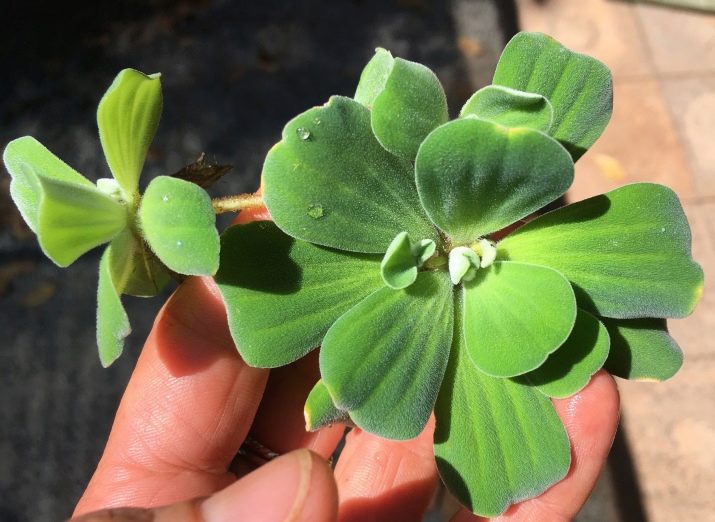
Duckweed
The next species, called Ryaska, is perceived by many as an ordinary weed, but this variety has excellent decorative qualities. The floating grass with small leaves looks neat and expressive. It is recommended to propagate Duckweed separately (in an open aquarium) and then transfer to a new place.
With this plant, you can create a "living" carpet on the surface of the water. In nature, Duckweed is often found in bets, swamps and other local water bodies.
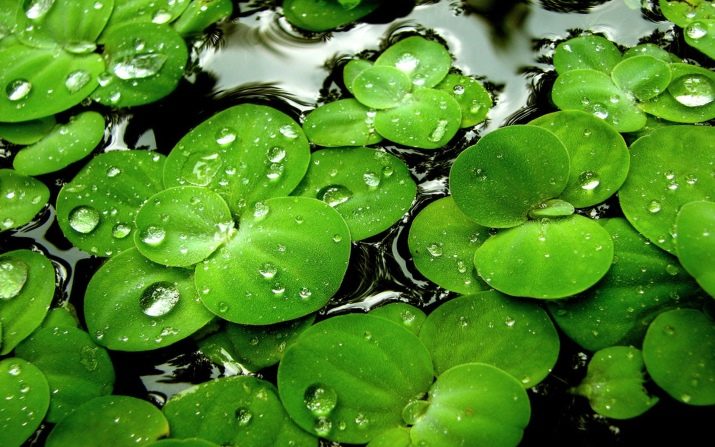
Eichornia beautiful
Water hyacinth, aka Eichornia beautiful, has amazing visual qualities.
The plant attracts many aquarists with its delicate lilac flowers.
Many argue that hyacinth looks different from different angles. The neat leaves are rounded. The plant has an attractive appearance only from above - under the leaves there are dense brown roots.

Elodei canadensis
Consider one of the representatives of the Vodokrass family. It is about Elodea of Canada.
Another name is "water plague". This is a poisonous plant that requires special maintenance conditions.
Despite this, it is often used for decorative purposes. You should not worry about the health of the inhabitants of the aquarium - algae will not harm them. The variety is characterized by long branches covered with small and bright leaves.
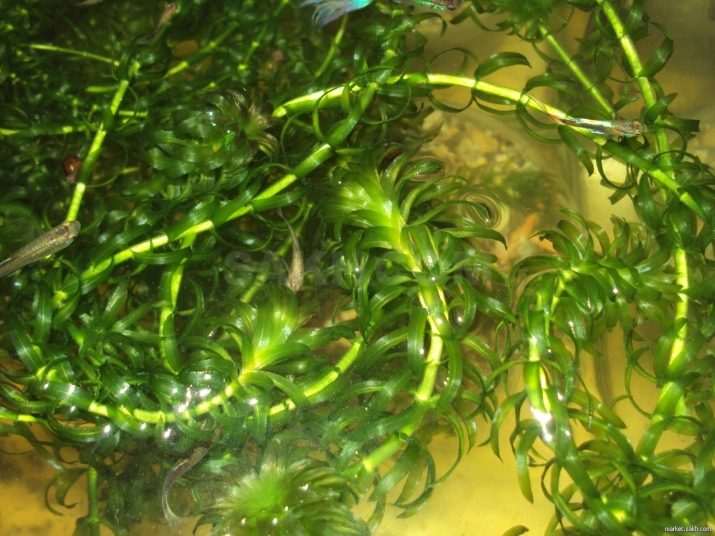
Wolfia
Wolfia is great for decorating a green canvas on the surface. This is small grass in the form of light green balls, the size of which does not exceed a few millimeters.
Also, in aquariums, neat islands are often made out of them.
The growth rate of algae depends on water temperature and light intensity. The higher the indicators, the faster Wolfia develops. Make sure that the water temperature does not drop below 10 degrees Celsius, otherwise the plant will begin to die.

Salvinia floating
The floating Salvinia plant can be found in the following regions: Odessa, Kherson, Astrakhan. Neat oval-shaped leaves flaunt on the stems. The roots are thin and lush, extending downward. An active growth process is observed in the warm season. With the onset of autumn, development slows down noticeably. Often in winter, the grass dies, but with the arrival of spring, Salvinia recovers on its own.
Spores and buds remain in the water, from which it is reborn.
For Salvinia to decorate the aquarium again with the arrival of the new season, you need to ensure correct wintering: in the fall, water with spores must be poured into a separate container, preserved and stored until spring, maintaining a temperature of 8 degrees Celsius.
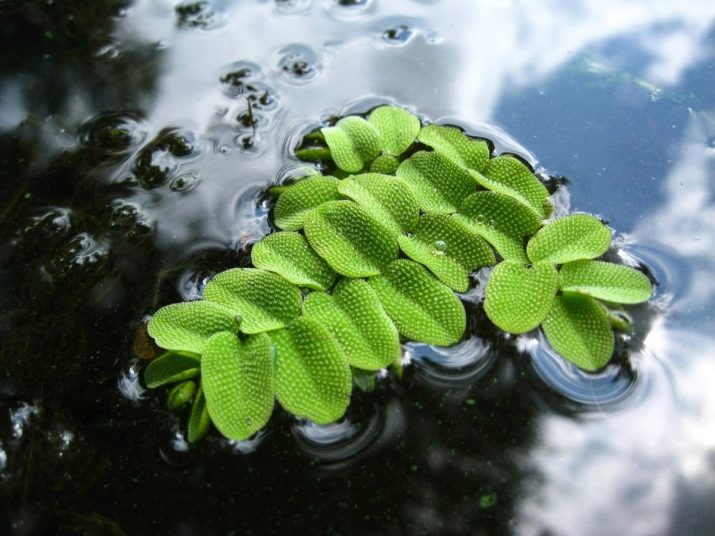
Egeria
In the family of vodokrassovykh there is a plant called Egeria. A feature of this representative of the flora is that these algae can grow and develop both on the surface of the water and in the ground. The grass is completely unpretentious and does not need special conditions of keeping, thanks to which it is often used for decorative purposes - a great choice for beginners.
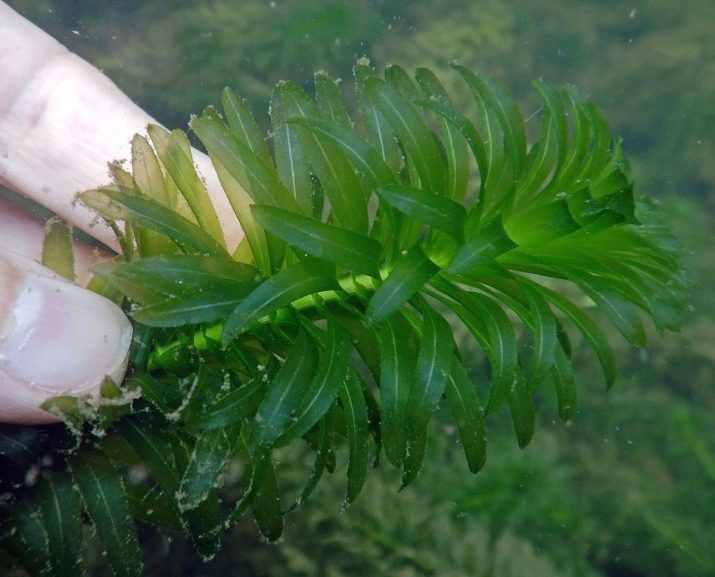
Features of maintenance and care
Most aquatic plants reproduce on their own: without special conditions, requirements and human participation. Due to the method of division, they grow rapidly even in a new place. Waterfowl representatives of the flora are unpretentious to the composition of the soil and adjacent grass, however, certain parameters must be observed for their successful growth.
Many species do not tolerate hypothermia. If you want the plant to delight you with lush and green foliage, install an artificial light source. Bright light is vital.
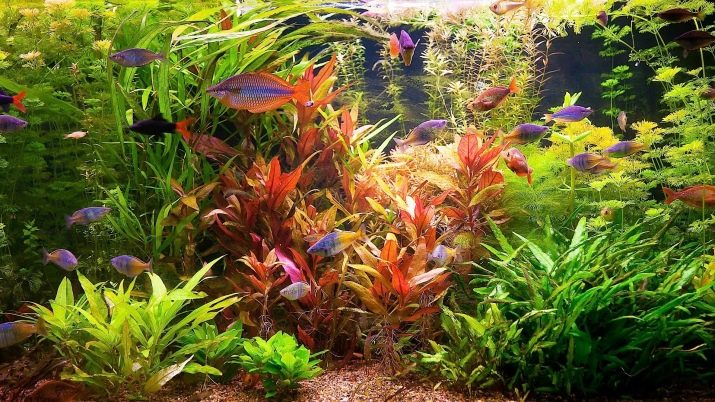
It is only necessary to transfer the plant to the aquarium when it is full. Keep a close eye on the condition of the flora. Make sure the leaves and flowers are not scorched by the lamp.
remember, that due to the rapid development of plants, they should be thinned if necessary... The dense green carpet looks impressive, but it can harm some fish. Inhabitants who like to hide at the bottom will not get enough light. Also, a large amount of grass disrupts the gas exchange process, which leads to rotting of the soil.
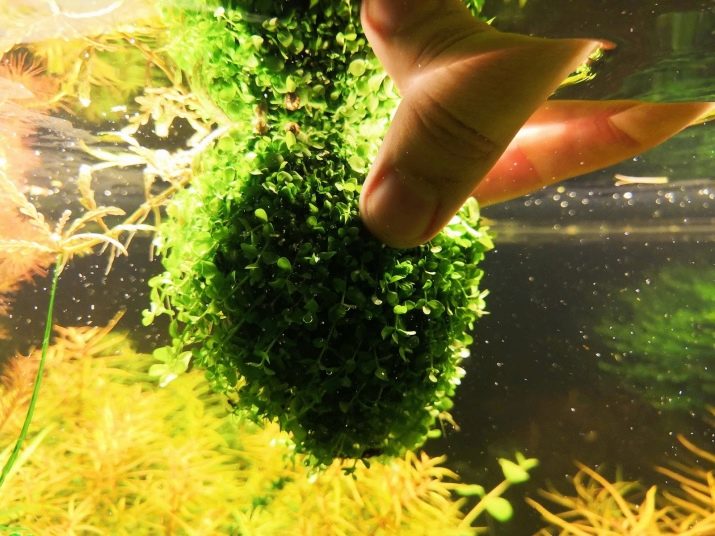
Recommendation
On the market you can find fertilizers designed specifically for aquarium plants. Before using the product, be sure to read the instructions and follow them in the process. Additional feeding will be especially useful with the onset of winter.
Each plant needs a certain intensity of light. On sale you will find different models of bulbs, differing in brightness and temperature.
See below for floating aquarium plants.








